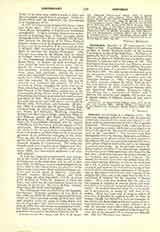

Conversi, lay brothers in a religious order. The term was originally applied to those who, in adult life, voluntarily renounced the world and entered a religious order to do penance and to lead a life of greater perfection. The renouncing of the world was known as the conversio a sceculo, which had as its object a reform or change of life, the conversio morum, hence conversi or the “converted”. The conversi were thus distinguished from the oblati or those who, as children, were presented or offered (oblati) by their parents to the religious life and were placed in a monastery to receive proper religious instruction and to be educated in profane knowledge. In the eleventh century St. John Gualbert, founder of the Benedictine congregation known as the Vallisumbrosani, introduced for the first time a distinction between the fratres conversi, or lay brothers, and priests, or choir religious. For among the conversi there were not seldom those who were either entirely illiterate, or who in the world had led a life of public scandal, or had been notorious criminals, and while on the one hand it was unjust that such should be debarred from the means of doing penance in the cloister and from the other benefits of the religious life, they were at the same time hardly to be considered fit subjects for the reception of Sacred orders. They were thus received into the order for the purpose of engaging in manual labor and occasionally for directing the temporal affairs of the monastery. In modern canonical usage the term conver sus is synonymous, or nearly so, with that of lay brother. What has been said of religious orders of men can, in general, be applied equally to those of women, though the distinction between conversae, or lay sisters, and choir, religious does not appear to have been introduced before the twelfth century. As a rule, the conversi wear a habit different from that of the choir religious; but the essential obligations of the vows and of the monastic life in general are alike for all. (See Lay Brothers and Oblati, Oblatae, Oblates.)
STEPHEN M. DONOVAN

